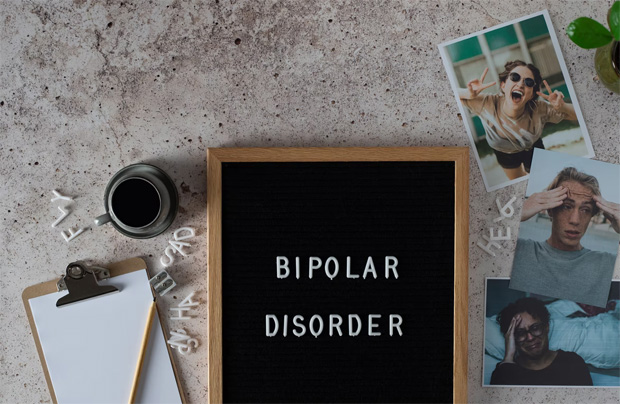Borderline Personality Disorder vs Bipolar Disorder – A Full Guide

Borderline Personality Disorder vs Bipolar Disorder: What’s the Difference
Sometimes, people confuse borderline personality disorder (BPD) with bipolar disorder because of the similarities in their symptoms, like depression, impulsiveness, and mood swings. However, these are two different clinical disorders with their distinct symptoms and potential treatments.
If you have any psychological issues, you can always contact a mental health expert for advice. They will be able to conduct testing for bipolar disorders and any other mental health disorders, in order to effectively diagnose and treat your condition.
Read this article to learn the main differences between BPD and bipolar disorder – it highlights their symptoms and treatment options.

Borderline personality disorder vs bipolar disorder: Introduction
BPD and bipolar disorder have a number of symptomatic similarities.
- In BPD, you think, feel, relate and behave differently than mentally healthier people. You may experience an ongoing cycle of an ever-shifting self-image, behaviour, and moods. It may cause difficulties interacting with people or maintaining a relationship.
- In bipolar disorder, you experience severe mood changes. It affects your mood, thoughts, functionality, and overall energy. The episodes of either highs or lows may last for days or even months. Bipolar disorder is sometimes also called manic depression.
The most glaring difference between these two illnesses is that BPD is a personality disorder, whereas bipolar disorder is a mood disorder.

Borderline personality disorder: Symptoms
BPD is a heinous clinical disorder that makes your self-image, behaviour, and mood unstable. Its symptoms can cause impulsiveness and an inability to maintain normal interpersonal relationships.
These are the symptoms that characterise borderline personality disorder;
- Insecurity and uncertainty about your role or place in the world
- Repeatedly changing core values, morals or interests
- Extremism or a tendency to view things in absolutes, like all good or all bad
- Frequently changing your opinion about other people, such as treating someone like a friend today and as an enemy tomorrow
- Having unstable and intense relationships with friends and family, like passionate love one day and intense hatred another
- Having a distorted self-image
- Attempting to avoid real or imagined sources of abandonment
- Self-harm, including cutting, burning, drinking or overdosing
- Having a difficult time trusting people
- Warranted or unwarranted fear of other people’s intentions
- Dissociation from reality, body and the world
- Suicidal tendencies
- Reckless behaviour, like practising unsafe sex, rash driving, spending sprees, substance abuse, and picking fights
- Severe episodes of anxiety, anger and depression
- Feeling empty inside
- Fear of loneliness
Please remember that not everyone with BPD experiences all these symptoms. It depends on the severity of the disease if you experience a few or all of the symptoms as well as their frequency of occurrence.
Experiencing events that cause stress and other intense emotions may trigger an episode of BPD. Since BPD patients do not experience events similar to regular people, their intense reaction to a seemingly harmless activity may seem disproportionate to others.

Bipolar disorder: Symptoms
Bipolar disorder may cause you to experience extreme emotional shifts, alternating between the highs and the lows. There are intervals of stability, but the extremes may last for days to months.
These are the symptoms that characterise the highs in bipolar disorder;
- Very optimistic mood
- A reduced need for sleep
- Overconfidence in one’s thought process and actions
- Racing thoughts or speech
- Recklessness
- Making grand and often unrealistic plans
- Having a poor judgement
- Easily flattered
- Delusions of grandeur
- Hallucinations
These are the symptoms that characterise the lows in bipolar disorder;
- Persistent exhaustion
- Feeling worthless
- Feeling guilty over the smallest setbacks
- Incapable of concentrating or decision making
- Frequent and unexplainable aches all over the body
- Periods of sadness and grief
- Urge to cry
- Changes in the sleeping and eating patterns
- Easy to irritate, anger and agitate
- Indifference to the world or plight of others
- Pessimism
- Inability to find pleasure in things you used to enjoy
- Self-imposed social isolation
- Suicidal ideation
Not every patient with bipolar disorder experiences depression. In most cases, experiencing an episode of mania is enough for a bipolar I diagnosis. Patients with bipolar II disorder may experience depression as well as mania.
The highs or mania in a bipolar disorder may last for 7 days, at least. But, on the other hand, the depressive episodes may last for more than two weeks straight.

Borderline personality disorder vs bipolar disorder: Diagnosis
For diagnoses, a mental health expert asks a patient different questions about symptoms, including their duration and severity. They may also investigate a person’s family history of mental illnesses. In most cases, a simple questionnaire is enough to acquire relevant information.
Bipolar I diagnosis requires the patient to exhibit at least one classic mania or depressive episode lasting for a week or more.
In cases when it is hard to make identification between BPD and bipolar disorder, the doctor may focus on specific symptoms, like;
- Sleeping –patients with bipolar disorder often have very disturbed sleep, especially during a depressive or manic episode. On the other hand, patients with BPD may have a regular sleep cycle.
- Episode interval –other than rapid-cycling bipolar disorder, most patients with bipolar disorder experience emotional highs or lows for weeks or even months. However, patients with BPD typically experience mood shifts that only last for a few hours to a few days.
- Self-harm –although it is uncommon in bipolar disorder, many patients with BPD harm themselves to deal with intense emotions. On the other hand, patients with bipolar disorder have a higher suicide rate.
- Instability in relationships –patients with bipolar disorder have difficulties maintaining a relationship, but it is manageable with proper treatment. BPD patients also have unstable relationships that are full of conflicts and chaos, but they are harder to maintain because of the inherent suspicion that comes with this disorder.
- Mania –impulsiveness is one of the chief characteristics of bipolar disorders. BPD patients experience episodes of mania as well, but they are neither as intense nor as long-lasting.
Additional information about the following parameters may also help distinguish bipolar disorder and BDP;
- Family history of illness –researchers have yet to identify a specific gene, but mood disorders often run in the family. This means if a close relative is diagnosed with either bipolar disorder or BPD, you have a higher probability of developing them as well.
- History of trauma –the leading causes behind BPD are unclear, but most people that develop this disorder typically experience trauma at a young age, such as abandonment, sexual or physical abuse, extreme mental pressure, adversity, loneliness, exposure to conflict, bullying and unstable home life.

Borderline personality disorder vs bipolar disorder: Treatment
Both BPD and bipolar disorder are serious mental conditions requiring the right treatment depending on their severity and frequency. They do not have specific medications, but doctors often prescribe meds for their mania, depression, and anxiety symptoms.
The most common treatment for either disorder typically involves a combination of medicines and psychotherapy. Psychotherapy involves talk therapy focused on an individual or a group. It can help patients learn how to communicate with people as well as express themselves adequately.
The following types of psychotherapy can help with borderline personality disorder;
- Dialectical behaviour therapy (DBT) –it is specifically designed to treat BPD. It teaches acceptance, mindfulness, and attentiveness. It allows a patient to reduce instances of self-harm, intense emotions and irrationality. With DBT, a BPD patient can learn to develop and maintain a healthy relationship.
- Cognitive behaviour therapy (CBT) –it helps people accept the world the way it is. It allows patients with BPD to better interact with other people and lessen the instances of mood alterations, anxiety or self-harm.
These are the most popular treatment options for bipolar disorder;
- Medicines –mood stabilisers, antipsychotics, anticonvulsants, and other medicines can help balance the highs and the lows.
- Psychotherapy –CBT and other psychotherapies can help a bipolar patient learn to live with it. It can help manage relationships, anxiety, depression, PTSD, and substance abuse better.
- Self-supervision and control –patients with bipolar disorder may better control their highs and lows by recognising the symptoms early on and mitigating them. Call your doctor, make appropriate lifestyle changes, get support from your friends and family, and take all prescribed medications.
- Lifestyle changes – yoga, meditation, exercise, running, mindfulness, and other similar techniques can help relieve stress and depression. It can help improve mental health without worsening the situation to the point of needing medications or hospitalisation.
Conclusion
BPD and bipolar disorder may have some token similarities, but they are very different clinical conditions. Simple lifestyle changes are enough to prevent their occurrence when caught early on. But in more severe cases, medication, therapy and even hospitalisation may be required. With effective treatment, a patient of either disorder may learn to live with the mental disorder and have a happy life.
Collaboration.




